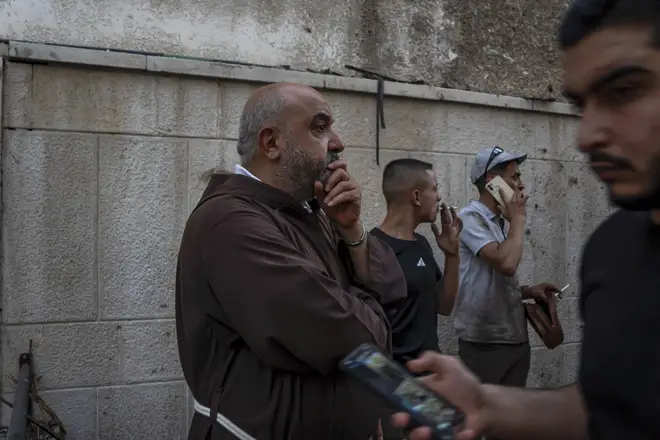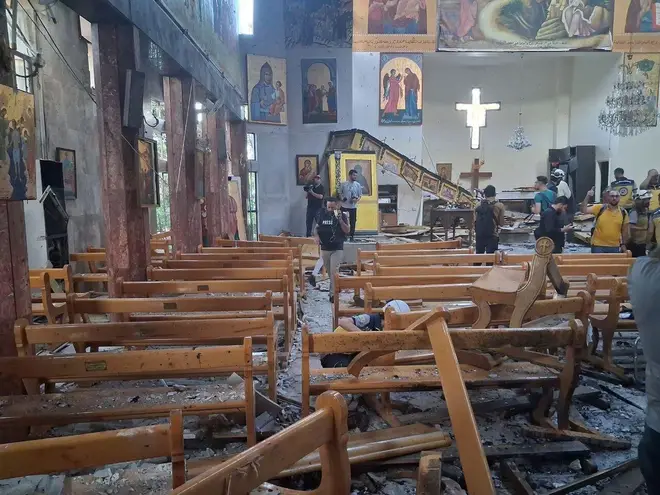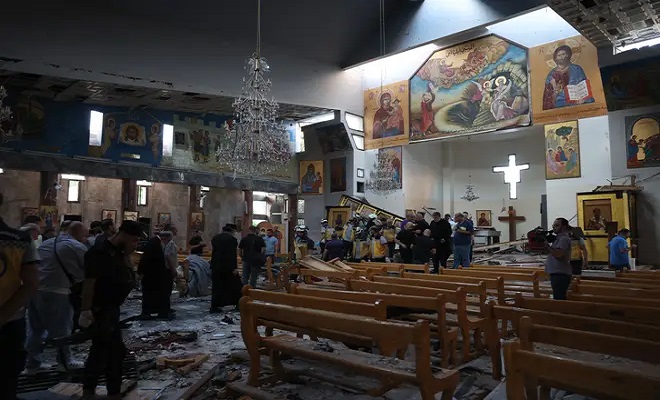Tragedy struck the heart of Syria’s capital today as a suicide attacker believed to be aligned with the Islamic State (IS) targeted the Greek Orthodox Saint Elias Church, killing at least 20 people and wounding more than 50 others, according to Syria’s interior ministry.
The bombing occurred during a prayer service, with eyewitnesses reporting the assailant opened fire before detonating an explosive vest inside the crowded place of worship. Unconfirmed reports suggest a second gunman may have also fired into the gathering of around 150 worshippers.
Scene of Horror
Images and footage from inside the church reveal a grim aftermath: shattered pews, torn religious icons, and the bodies of victims strewn across the sanctuary floor. The centuries-old church, located in Damascus’s historic Christian quarter, was left in ruins.
READ MORE: Islamic Emirate Condemns Israeli Strikes on Iran as “Unjustified and Illegitimate”
Local residents described hearing a powerful explosion followed by gunfire. Emergency responders quickly sealed off the area, and security personnel worked to secure the scene.
New Government Faces First Major Test
This marks the first significant IS attack since former President Bashar al-Assad was ousted in December and replaced by an Islamist-led transitional government. The current administration, composed of factions formerly associated with Hayat Tahrir al-Sham (HTS), has pledged to protect religious minorities and ensure national security.
Security measures had been heightened in the Christian district of Damascus, with checkpoints screening vehicles entering the area. Despite these efforts, the attacker was able to breach the perimeter and carry out the bombing.
A Sign of IS Resurgence?
Although IS activity in Syria had been relatively subdued in recent months, analysts warn this could signal a dangerous comeback. Following the collapse of the Assad regime, IS militants reportedly scavenged abandoned military depots, acquiring arms and ammunition left behind by retreating forces.
The new Syrian leadership views IS as a persistent threat and has launched several operations to dismantle sleeper cells and underground networks across the country.
Propaganda and Political Tensions
In a bid to stoke unrest, IS media channels have circulated images of Syria’s new president, Ahmed al-Sharaa, meeting with former U.S. President Donald Trump during a diplomatic summit in Riyadh. IS propaganda frames the meeting as a betrayal of the Islamist struggle—an attempt to undermine the new leadership and draw fresh recruits.
U.S. officials have also voiced concerns about the group’s re-emergence, identifying it as a major risk to both regional and international security.
Ongoing Investigation
The municipality of Damascus confirmed that security services are actively investigating the bombing and working to identify those behind the attack. Officials have vowed to bring the perpetrators to justice and prevent future attacks on Syria’s vulnerable communities.
As Syria navigates a complex post-Assad era, the bombing serves as a grim reminder of the fragile security landscape and the ongoing threat of extremist violence.










